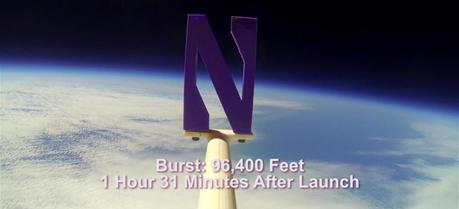
Students Test Solar Cells Behavior at High Altitudes
Four undergraduate students from Northwestern University’s McCormick School of Engineering and Applied Science have taken photovoltaic cells somewhat closer to the energy source to find out how the proximity to the Sun affects their performance.
The team, led by Mark Fischer, who will graduate in June with a B.S. in mechanical engineering, cheered as the payload that was sent 97,000 feet into the atmosphere on a weather balloon parachuted back to Earth intact.
Fischer and fellow McCormick seniors Julian Minuzzo, Jingwei Lou and Sail Wu, who sent the solar cell experiment—with a video camera—up from an Indiana field May 23, were surprised by the answers to their simple questions.
When they reviewed the data and crunched the numbers, they found that the solar cell — a device that converts the energy of sunlight directly into electricity—did not, as expected, perform best at the highest altitudes. They assumed that closer proximity to the sun would mean more intense rays and better performance.
It turns out, the sweet spot for a high-altitude solar cell is between 50,000 and 60,000 feet above Earth’s surface.
“Solar cells are more efficient as they get colder,” Minuzzo said. “As altitude increases, the air temperature gets colder, but then you reach a point where it gets warmer again. The air is coldest between 50,000 and 60,000 feet.”
The findings could be important for future technologies like solar-powered aircraft and drones.
The project was a great learning experience for the students—not just about solar cells or weather balloons, but the value of careful preparation.
“There’s this moment where you count down—3, 2, 1—and let the balloon go, and there’s nothing you can do. It’s out of your hands,” Fischer said. “You launch it and cross your fingers and hope you did everything right.”
The experiment traveled 40 miles in one hour and 56 minutes before returning to Earth—31 miles from the launch site—recording data and images during the entire trip.

